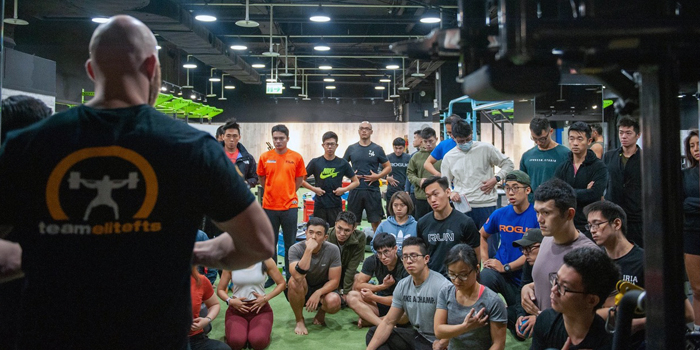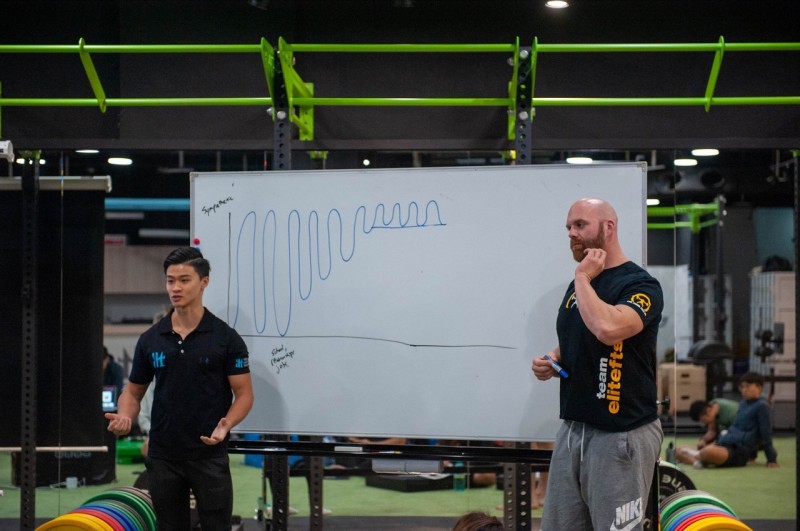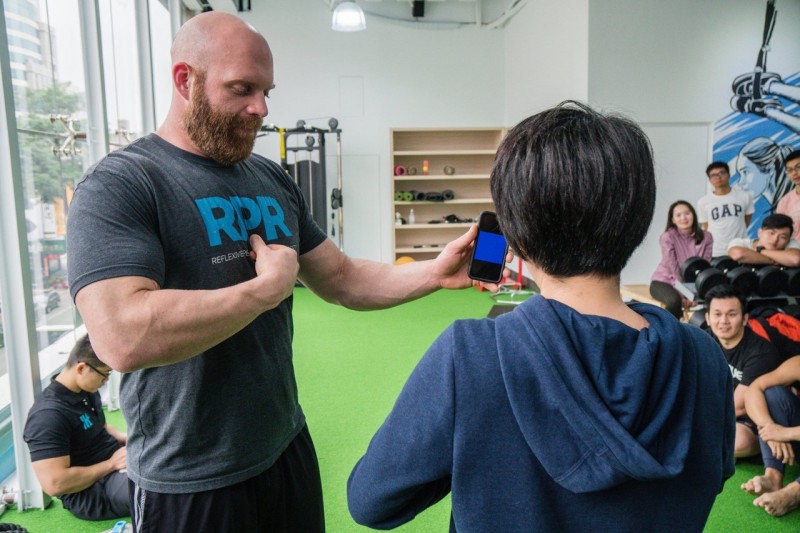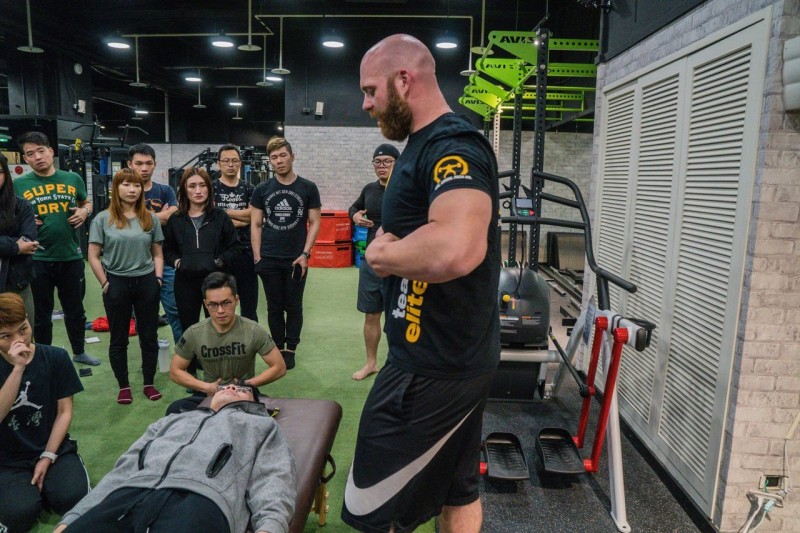
Let me first start this article with the disclaimer that I acknowledge and completely agree that academia plays a significant role in the decisions that any professional who works with the human body makes when providing services for a client or patient. Understanding the body and how it works is the basis of everything we do. Do not make the mistake of misinterpreting this article as anti-scientific. This article is meant to be a call to each of us to better understand the process of scientific progress as well as each and every one of our roles in this process.
“Evidence-based practice” is the most commonly accepted method guiding professional practice and decision-making. It is utilized across multiple disciplines but most specifically in human sciences. These include medicine, psychology, strength, conditioning, etc.
In theory, evidence-based practice provides a large set of guidelines from which to direct your service, product, or care. It is meant to highlight the art of informed decision-making based upon multiple factors in a given situation. Rather than trying to find right versus wrong, it is meant to remind us that it is not enough to simply have knowledge: you must develop the skillset of applying it as well.
RECENT: The Mind-Body Link: Posture Yourself Into a Winning Position
But over the past 10-20 years, professionals have traded the depth and complexity of the “evidence-based” approach for a more attractive and superficial take. With the same irony that Botox and liposuction clinics have absorbed the words “health” and “wellness,” the evidence-based approach has become a marketing buzzword to try to signal to the public that you are “cutting edge” and “ahead of the curve,” rather than describing an internal ethos for how you carry yourself as a professional.
It’s kind of like when you go on a first date and the girl tells you that she “hates drama.” Dollars to donuts, the exact opposite is true. And just like the bullet that you (hopefully) dodged from that first date, those who promote themselves as evidenced-based often display a lack of understanding of how the evidence-based method works. This can become very apparent when these individuals are faced with a technique, piece of information, or system that they are unfamiliar with.

Rather than remaining objective, observant, and open to learning, they instead view the unknown as threatening and thus become defensive: “Where’s the evidence?” they ask. Short of producing a double-blind randomized control trial, there is no convincing these evidence-based professionals. Why? Because with the superficial application of evidence-based practice, the unknown is scary to them. Rather, the unknown should entice curiosity and pique interest. Being wrong is just part of the process required to get to being right. If you wait for someone else to tell you all of the right answers, you are, by definition, not ahead of the curve.
For example, the active release technique (ART), one of the most common and effective methods for treating soft tissue injuries (depending on who you talk to), was developed sometime around 1984-1988 by a chiropractor named Mike Leahy. The first research article on this technique was presented in 2004, and it soon became known as the “gold standard” in soft tissue therapy. So, what’s the point of this story? After 20 years of results, a research article finally came around to say, “Yes, ART works.” If you had been a practitioner who was an early adopter and was utilizing ART for a decade or more, your response would have been, “Cool, I already knew that. But thank you for supporting what I already know.” Meanwhile, the “evidence-based” practitioners armed with their newly discovered science began to flock to the nearest ART seminars to learn the latest and greatest in conservative musculoskeletal care. This is merely an example in the medical world, but it happens across all industries.
The Reverse Hyper™ is another great example. Believe it or not, once upon a time, a Reverse Hyper™ did not exist. There was no theory on how it worked and no direct science to back its use. So, how does something go from being non-existent to being widely accepted as a critical piece of equipment in any training facility? Innovators! Innovators are those who first developed and tested the Reverse Hyper™. In this case, the innovator was Louie Simmons.
Much of innovation is based out of necessity. The necessity that fueled the innovation of the Reverse Hyper™ was a broken back. Without this injury, there would be no urgent need to come up with a way to rehab the back. Had he been concerned only with relying on the “latest research” to address his injury, he would not have also developed the Reverse Hyper™. This is not to say that there was no scientific basis involved. In fact, the exact opposite is true. To be an innovator and not just a follower of an industry requires three components: 1) client perspectives and experiences, 2) clinical/professional expertise, and 3) external scientific evidence.

Client Perspectives and Experiences
This pillar of the evidence-based model refers to the perceptions and experiences of the client or subject involved. This person is usually the individual with the problem needing solved. Whether it be a disease, injury, or simply a performance goal, this person is essential because he or she becomes the measuring stick of change. It is his or her anecdote of how a process, protocol, or product changed his or her problems that lays the ground work for all scientific processes.
Wait… are you referring to anecdotal evidence?! Blasphemy!
Yes. And if this is your reaction, you lack a basic understanding of science or how it works. It is impossible to create new evidence-backed science or a new innovation without first starting with problems, creativity, and anecdotal evidence (AKA case studies). If Louie hadn’t broken his back and been forced to innovate a better solution than spinal surgery, there would be no problem with measuring the effects of the reverse hyper, and thus no reason to develop the reverse hyper (that or someone else would have had to be the one to break his or her back). Furthermore, had the reverse hyper not provided anecdotal results for his condition, he would have scrapped the piece of equipment. No other innovators would have tested it, and similar (anecdotal) case studies would not have been available to drive the creation of the purchasable equipment. No one would have a reverse hyper in his or her gym right now.
Clinical/Professional Expertise
Part two of the evidence-based equation involves the involvement and direction of professional expertise. These are the innovators.
In short, innovators are responsible for every product, service, and business that pushes us forward. They absorb the most risk, face the most scrutiny, and experience the most failure out of anyone else involved in the process. However, they are far from reckless and unintelligent. Usually these individuals are actually the smartest and most scientifically literate. After all, if you’re going to create something that doesn’t exist, you must have a great understanding of not only how the world works but also how to apply these principles to something completely different. So, how did Louie take his back injury and create a solution (the Reverse Hyper™)? He had to have vast knowledge in multiple fields, such as rehabilitation and strength training, as well as information about his actual injury.
THIRST: Bringing Quality, Service, and Integrity to Terre Haute
In a general application, the professional expert needs to listen to and understand his or her clients, as well as have a broad enough knowledge base to see the opportunity for information or technology to solve his or her client’s problem. As new technology or methods are tried and tested, this expert must have the ability to adapt and tweak things when new problems or roadblocks inevitably come up. Again, if you’re looking to be on the cutting edge of science, get used to being wrong.
External Scientific Evidence
The final piece required in evidence-based practice is, you guessed it, science! Scientific information is an important part of the scientific process, but it should not be the only part. And in many situations, the information is only slightly relevant to the solution itself. For example, a football strength coach may utilize known information about training 100-meter sprint athletes to tweak and adapt his skill players’ off-season speed program. It’s a matter of “if this information works for this application, what if we utilize it for this scenario instead.”

The current mainstream utilization of the evidence-based method often focuses on the current literature and on the foundation of all decision-making. This is flawed because fundamentally, the literature will always be 15 years behind and will be the last to appear.
Now, 15 years to develop highly invasive interventions, such as surgery or drugs, is completely understandable, as unproven and understudied interventions like these may result in severe consequences or side effects. When it comes to advancing less risky inventions, however, we do not need a meta-analysis based on multiple double-blind randomized control trials to tell us that a squat is good for athletic development or that a soft tissue therapy works.
As competent professionals, we need to understand that the “current evidence” is all around you, not just in a book or in an academic article. It’s in the results we experience firsthand and observe from listening and paying attention to the experiences of the clients we work with.
If you are relying only on the works of others to guide you, you are missing two giant pieces of the puzzle. Also, because it can take years of results for something to even start to be studied at such a level as to be deemed concrete evidence, if you are completely reliant on the latest information, you cannot truly be ahead of the curve.
Information is great to have, but it is useless if you cannot apply it. If having the latest information was the only thing required to innovate and create change, then every year, the top dollar would be spent on the latest crop of college graduates. After all, they just finished learning the most up-to-date information relative to their fields.
So, why is this not the case? Because without spending the time to build the experience of someone who is in the field, working hands-on with the problem, your GPA is nothing more than a theoretical understanding of the world that has never been tested. What makes an expert an expert is spending 10, 15, 20 years learning from peers, taking chances, making mistakes, and experiencing failure. The reason the experts know all of the answers is because they’ve been wrong before and had to figure out why.
The evidence-based model has never been about relying on others to do the work so that you can simply read about it in a book (although it is an incredibly valuable tool). It is about being deeply involved in your own journey and in your own experiences, as well as being dedicated to the constantly surging struggle of learning from the lessons of your experiences and those around you to make the world a better place.










